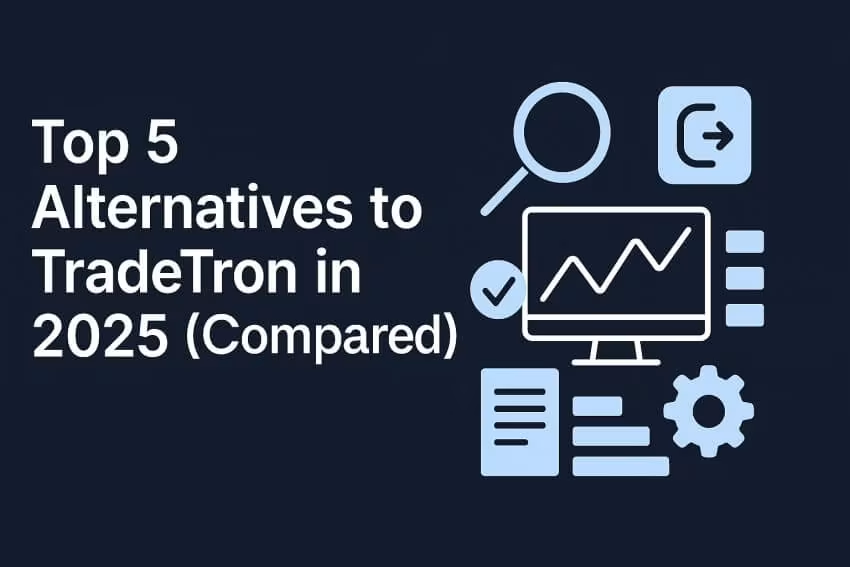Algorithmic trading, on some of the best algo trading platforms, has revolutionised how investors approach financial markets. Despite its advantages, pitfalls exist. This blog explores key mistakes and shares expert insights to help investors navigate the complexities of algo trading successfully.
Importance of Algo Trading in Today's World
In today's world, the importance of algorithmic trading is more pronounced than ever.
- With financial markets becoming increasingly complex and fast-paced, algo trading plays a crucial role in enhancing market efficiency, liquidity, and accessibility.
- The automation of trade execution based on predefined algorithms allows for rapid decision-making, minimising human errors and emotions.
- Those that are the best algo trading platforms facilitate quick response to market changes, making them particularly valuable in the era of digital transformation and global connectivity.
- The ability to analyse vast amounts of data in real-time and execute trades swiftly positions algo trading as an indispensable tool for institutional investors, hedge funds, and increasingly, individual investors, levelling the playing field and opening new opportunities in the ever-evolving landscape of finance.
Common Mistakes to Avoid in Algo Trading
1. Overlooking Risk Management
One of the critical pitfalls in algorithmic trading is the oversight of risk management, wherein investors neglect to implement robust strategies to shield themselves from unforeseen losses.
- To mitigate potential risks investors should establish clear stop-loss orders that act as safeguards against significant downturns.
- Diversifying portfolios across various asset classes further spreads risk and helps guard against the impact of adverse market movements.
- Additionally, regular reassessment of risk parameters is essential to ensure that risk management strategies remain aligned with evolving market conditions.
2. Ignoring Market Conditions
Ignoring market conditions in algo trading is a critical mistake that jeopardises trading strategy effectiveness. This can be avoided by maintaining a proactive approach by continuously reviewing and updating algorithms to align with evolving market dynamics. Financial markets are dynamic, and influenced by economic events, geopolitical shifts, and technological advancements. Algorithms failing to adapt become outdated and inefficient.
3. Lack of Human Oversight
The lack of human oversight in algorithmic trading, wherein investors rely solely on automated systems, poses a significant risk of unanticipated losses, particularly in the face of extreme market conditions.
- The critical lesson here is to emphasise the importance of maintaining regular monitoring and active human intervention.
- Investors should stay engaged with their algorithmic strategies, intervening when necessary to prevent deviations during unusual market events.
- By staying vigilant and combining the efficiency of automated systems with human judgment, investors can mitigate the potential impact of unforeseen circumstances and ensure that their algorithmic trading strategies remain aligned with their financial objectives.
4. Incomplete Understanding of Algorithms
An incomplete understanding of algorithms can be a critical pitfall in algorithmic trading. Deploying complex algorithms without a thorough comprehension can lead to unintended consequences, ranging from unexpected losses to inefficient trading strategies.
- The lesson here is clear–investors must invest time in fully understanding the intricacies of the algorithms they intend to use.
- This involves seeking education on algorithmic principles, consulting with professionals experienced in the field, and conducting extensive testing before deploying automated trading systems in live markets.
- A solid understanding not only mitigates the risk of unintended outcomes but also empowers investors to make informed decisions, optimise strategies, and navigate the complexities of algorithmic trading with confidence.
5. Inadequate Backtesting
Inadequate backtesting on an algo trading platform, like uTrade Algos, is a critical mistake in algorithmic trading, where insufficient or flawed testing procedures can significantly compromise the accuracy of performance assessments.
- The lesson here is to prioritise a thorough approach to backtesting by utilising precise historical data and conducting comprehensive tests under a spectrum of market scenarios.
- Rigorous backtesting not only validates the efficacy of algorithms but also serves as a crucial diagnostic tool, helping identify potential weaknesses and vulnerabilities that may otherwise remain hidden.
6. Overfitting Strategies
Overfitting strategies in algorithmic trading on an algo trading platform, like uTrade Algos, pose a significant risk, as they involve designing algorithms that are excessively tailored to historical data. This mistake can impede the adaptability of the trading strategy to diverse market conditions, leading to suboptimal performance when faced with unforeseen circumstances.
- The crucial lesson here is to strike a balance between specificity and adaptability. Instead of creating algorithms overly reliant on historical patterns, it is essential to develop strategies that can adjust dynamically to varying market environments.
- Achieving this balance enhances the robustness of the algorithm, allowing it to navigate fluctuations and changes in the market with greater resilience and effectiveness.
7. Neglecting Transaction Costs
Neglecting transaction costs in algorithmic trading poses a significant risk to overall profitability. The mistake lies in underestimating the impact of fees and expenses associated with buying and selling financial instruments. The lesson here is clear:
- Investors must conscientiously factor in transaction costs when designing and executing algorithmic strategies. By optimising order execution to minimise these costs, traders can safeguard potential gains and enhance the overall profitability of their automated trading systems.
- Acknowledging the influence of transaction costs is essential for small investors engaging in algo trading, as these expenses can accumulate and impact the net returns, making cost-efficient execution a key component of a successful algorithmic trading strategy.
In the dynamic world of algo trading, understanding and learning from these common mistakes are integral to success. By integrating these lessons on risk management, market adaptability, human oversight, algorithm comprehension, thorough backtesting, strategy adaptability, and cost optimisation, investors can refine their trading approach on algo trading platforms, like uTrade Algos, and navigate this complex landscape more effectively.












